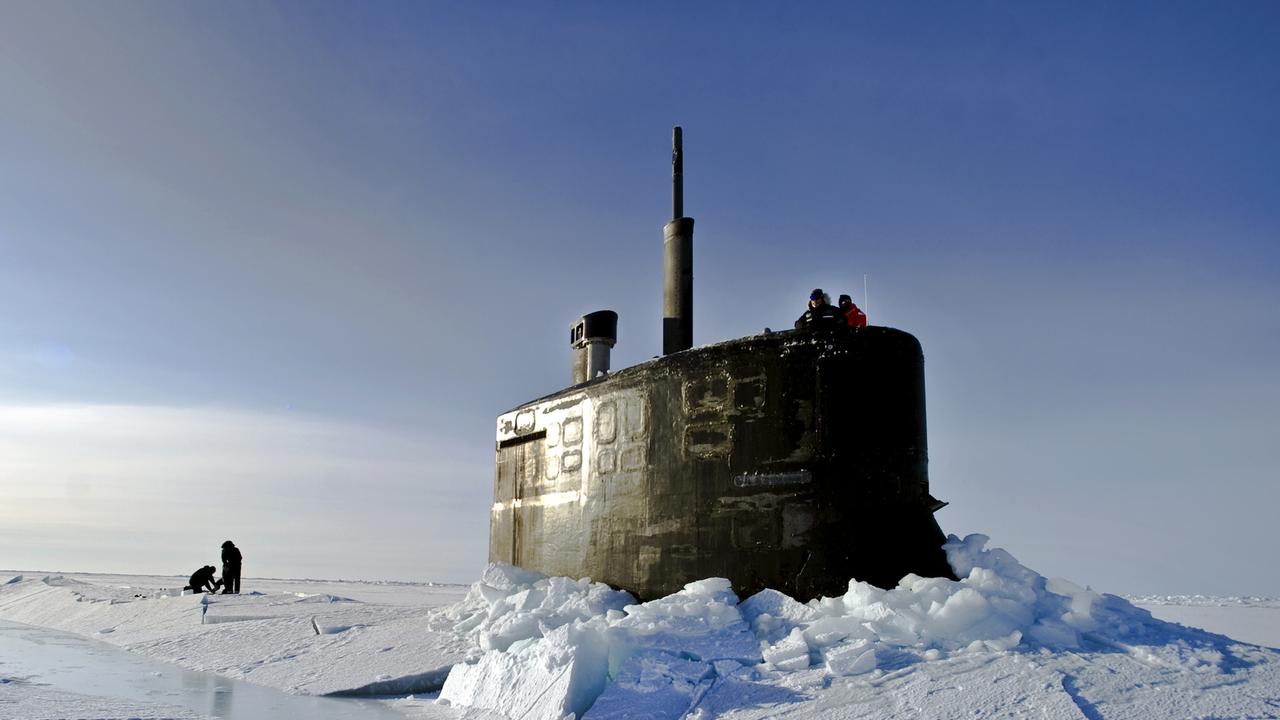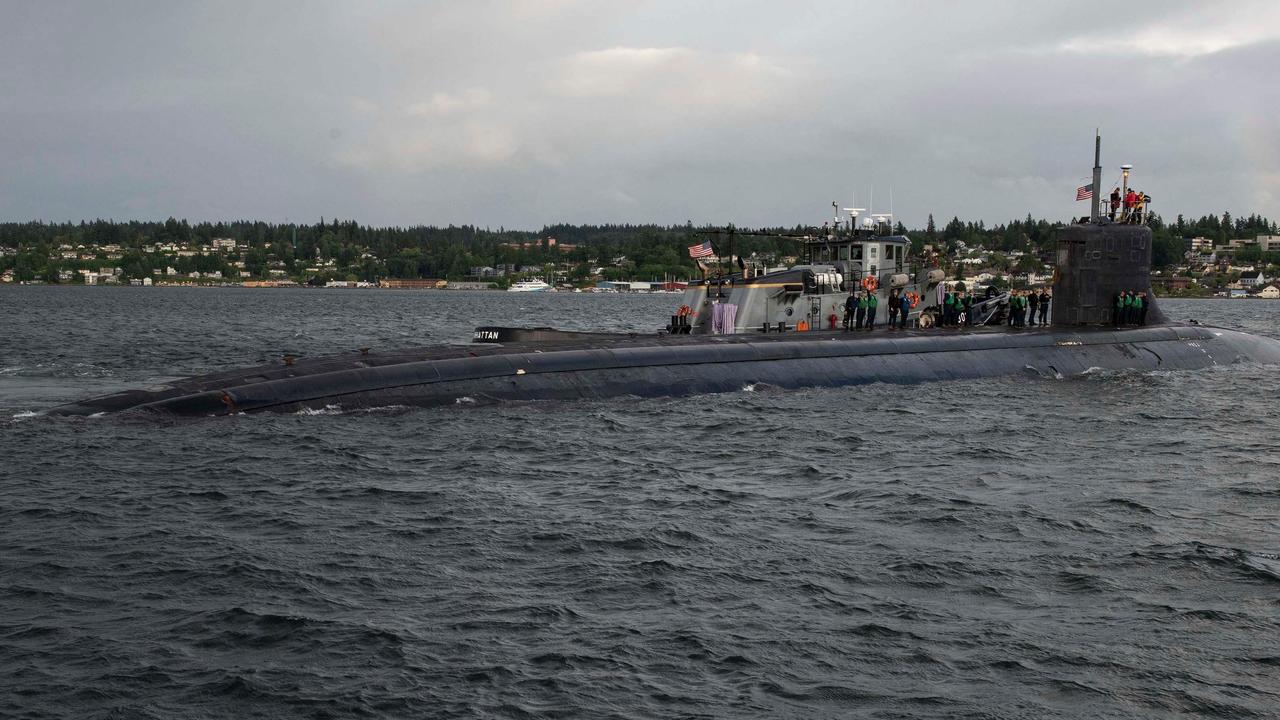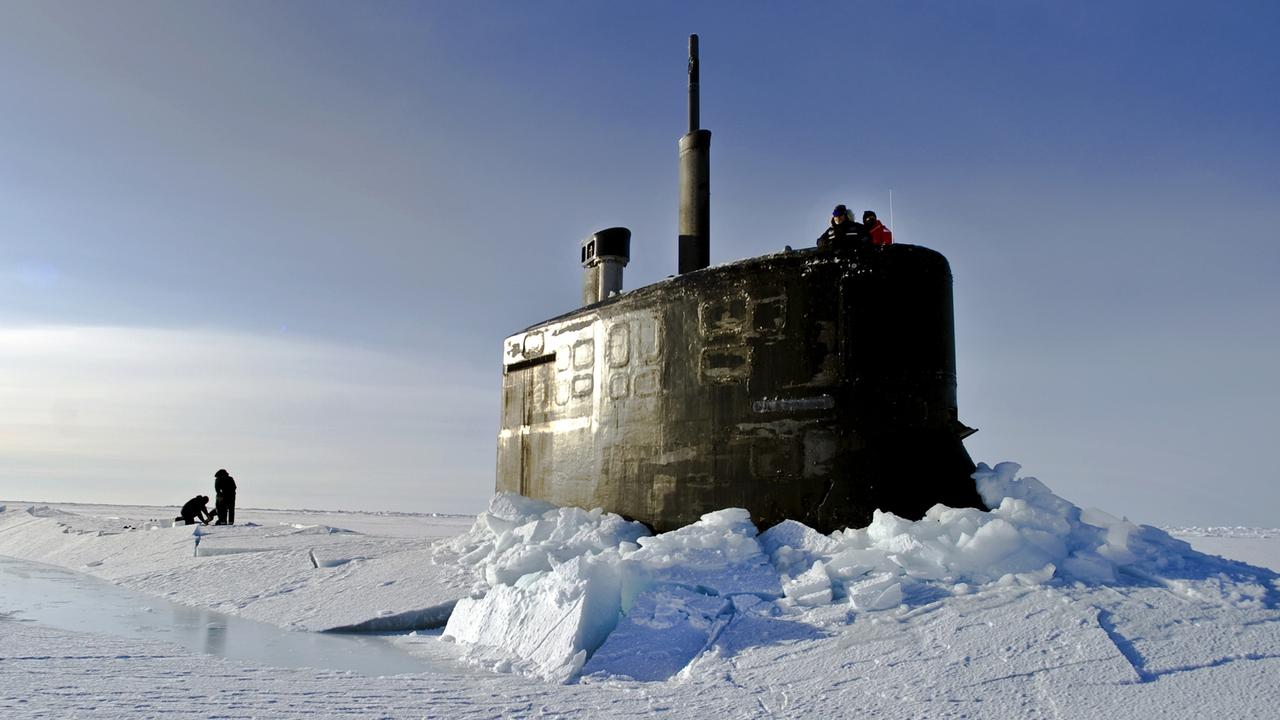China demands US withdraw military from South China Sea
A mysterious submarine collision that the US kept “secret” has led to a war of words between America and China.

China has demanded the US withdraw its military from the South China Sea because it’s “creating anxiety”.
Chinese state-controlled media has accused America of a “stupid mistake” after one of its submarines struck an unknown underwater object earlier this month.
Beijing, insisting the incident took place inside its “territorial waters”, is complaining Washington has “deliberately delayed and concealed the details of the incident”.
The US Navy’s Seawolf-class nuclear-powered attack submarine USS Connecticut was involved in a collision on October 2 which hurt several of its crew. It took five days before the incident was made public.

Chinese Ministry of Defence spokesman Senior Colonel Tan Kefei this week maintained the pressure, saying Washington’s secrecy over the incident “could easily lead to misunderstanding and miscalculation”.
The submarine accident was “bound to affect the navigation safety in the South China Sea, bring about serious concern and anxiety among countries along the South China Sea, and pose serious threat and risk to regional peace and stability,” he said.
Maintaining the rage
“For a long time, the US military has frequently dispatched aircraft carriers, strategic bombers, nuclear submarines and other advanced weapon systems to show muscles and stir up troubles in the South China Sea,’” Colonel Tan said.
Washington, for its part, has accused Beijing of precisely the same thing.
Colonel Tan went on: “The US should stop its close-in reconnaissance of the adjacent seas and airspace of China’s islands and reefs in the South China Sea and its military deployment against China, and stop the so-called “freedom of navigation” operations.”
The United States, along with South China Sea nations Vietnam, Taiwan, the Philippines, Malaysia, Brunei and Indonesia, disagree.
The Southeast Asian nations have territorial and exclusive economic zone rights conveyed under the United Nations Convention on the Law of the Sea. Beijing, however, has rejected an international court of arbitration ruling that its claim to the entirety of the South China Sea was unfounded.
But the war of words continues.
“A discerning person can tell at a glance that the United States is the biggest driver of the ‘militarisation’ of the South China Sea and the ‘trouble maker’ that undermines the peace and stability of the South China Sea,” a Chinese-language account of Colonel Tan’s address reads.
“Thanks to the joint efforts of China and ASEAN countries, the situation in the South China Sea has recently slowed down and has continued to show a positive development trend. The sea lanes have also been kept open and safe. The so-called ‘freedom of navigation and overflight’ by the United States is essentially a cover for the United States to challenge the rights and interests of other countries by virtue of its powerful maritime power.”
Connecticut’s untold story
What happened on October 2 remains shrouded in secrecy.
Details of the failings that led to the accident are yet to be released. The same applies to the heroics of getting the damaged submarine out of the South China Sea – unnoticed.
We don’t even know where the incident occurred.
The US Navy’s curt press release made on October 7 states that two sailors sustained moderate injuries and nine minor injuries.
It doesn’t mention the submarine’s need to remain undetected. A damaged warship near Chinese facilities would have been a high-value propaganda coup. And a potential intelligence disaster.
In 2001, a damaged US Aries II surveillance aircraft was forced to land on China’s Hainan Island after colliding with an intercepting warplane. The crew was returned after 10 days. The aircraft was disassembled and examined before being returned to the US in shipping containers.
At some point, the USS Connecticut was forced to surface – and stay surfaced – as it limped some 2500km towards the isolated island naval base of Guam. That journey took about a week.
It was likely a harrowing experience, given that submarines are not designed to sail for long periods on the surface – even undamaged.
“The submarine remains in a safe and stable condition. USS Connecticut’s nuclear propulsion plant and spaces were not affected and remain fully operational,” the US statement read.
The Navy is yet to describe further the damage the elite submarine has sustained.
The USS Connecticut’s crew remain isolated on Guam as they are debriefed and instructed on maintaining the mission’s secrecy.

The trouble with secrets
“The Connecticut nuclear submarine collision incident once again demonstrated that the United States is the biggest source of risk to international nuclear safety, the biggest source of disaster for security in the South China Sea, and the biggest destroyer of world peace and regional security,” Colonel Tan said.
Despite the irony amid even more “live-fire” naval and air exercises in the region designed to assert its dominance over the contested sea, Beijing now appears determined to capitalise on Washington’s embarrassment.
The incident “has seriously threatened regional national security and exacerbated regional tensions,” Colonel Tan’s statement reads. “This is exactly the root cause and harm of this incident.”
Since its curt press release on October 7, Washington has remained silent.
The damaged USS Connecticut remains out of sight at the mid-Pacific island naval base. And no military leadership – be it US Navy or civilian executive – has yet explained what happened or why.
That has left Beijing to dominate the narrative.
“Did the accident cause nuclear leakage and damage the marine environment? Will it affect the safety of navigation and fishery operations in the sea area where the incident occurred?” Colonel Tan has asked. “Such irresponsible and secretive practice, lacking transparency, could easily lead to misunderstanding and miscalculation. China and countries around the South China Sea have no choice but to question the truth and the US side’s intention.”
Jamie Seidel is a freelance writer | @JamieSeidel






